I’ve cleaned hundreds of rubber kitchen mats in busy homes and commercial kitchens. I know what grease, grit, and odors can do if you let them sit. Here is a simple, proven plan for how to clean a rubber kitchen mat without damaging it. I’ll show you fast daily care and deeper cleaning that keeps mats safe, non-slip, and odor-free. Expect clear steps, pro tips, and real-life fixes that work.
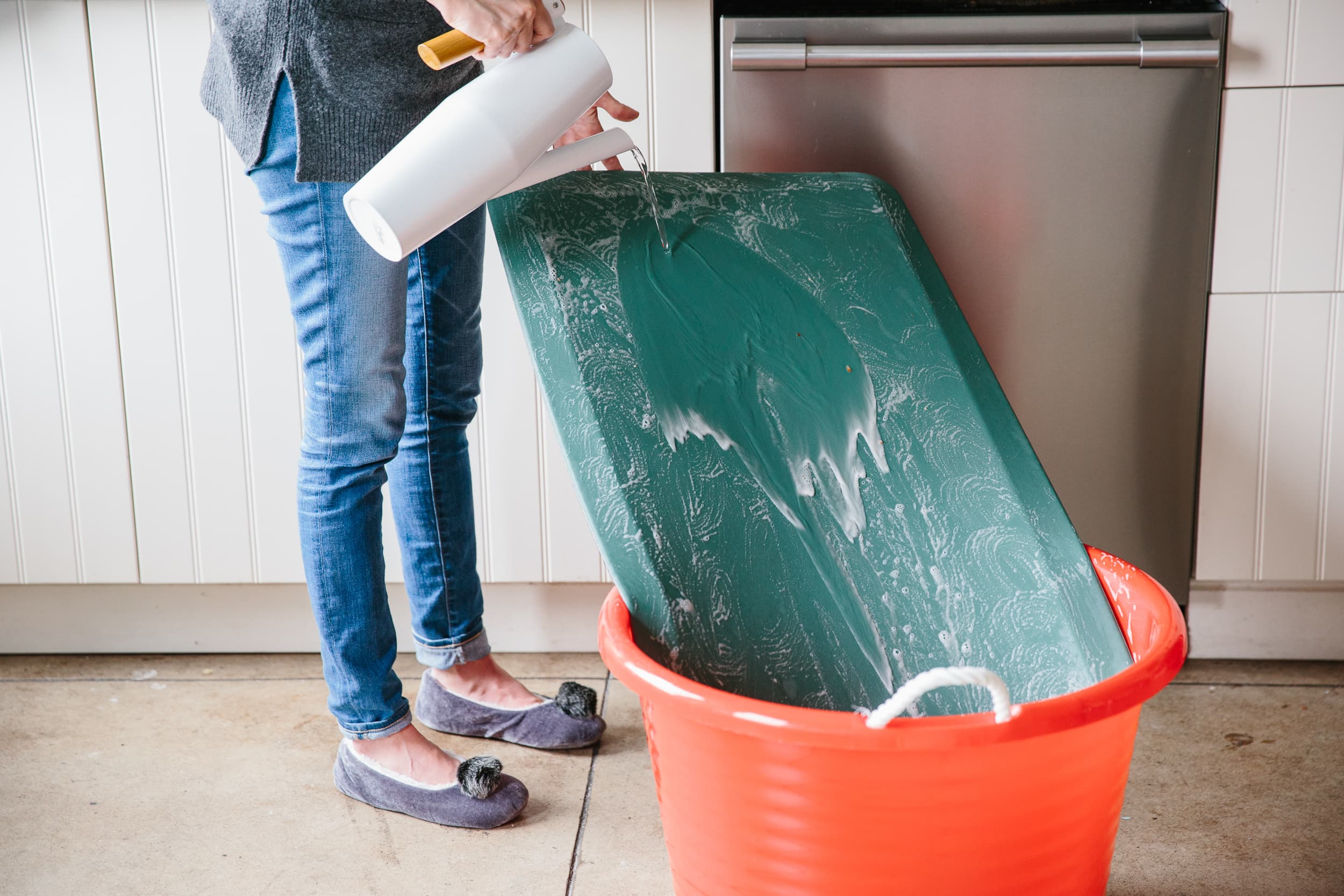
Source: www.thekitchn.com
What You’ll Need
Rubber is tough, but harsh chemicals can break it down. Choose gentle tools first. Use stronger options only when needed.
Essentials:
- Warm water for loosening grease and dirt
- Mild dish soap to cut oils without harming rubber
- Soft brush or nylon scrub pad to avoid scratches
- Microfiber cloth or soft sponge for surface wipe-down
- Bucket or sink for mixing and soaking
- Towel rack, drying rack, or porch rail for air-drying
- Paper towels or clean cloths for quick blotting
Optional for tough jobs:
- White vinegar for deodorizing
- Baking soda for mild abrasion and odor control
- Enzyme cleaner for food-based stains and odors
- Food-safe degreaser for heavy oil build-up
- Hydrogen peroxide 3% for light disinfecting
Pro note: Most mat makers recommend pH-neutral cleaners. Very strong bleach or solvent cleaners can dry out rubber and reduce traction.
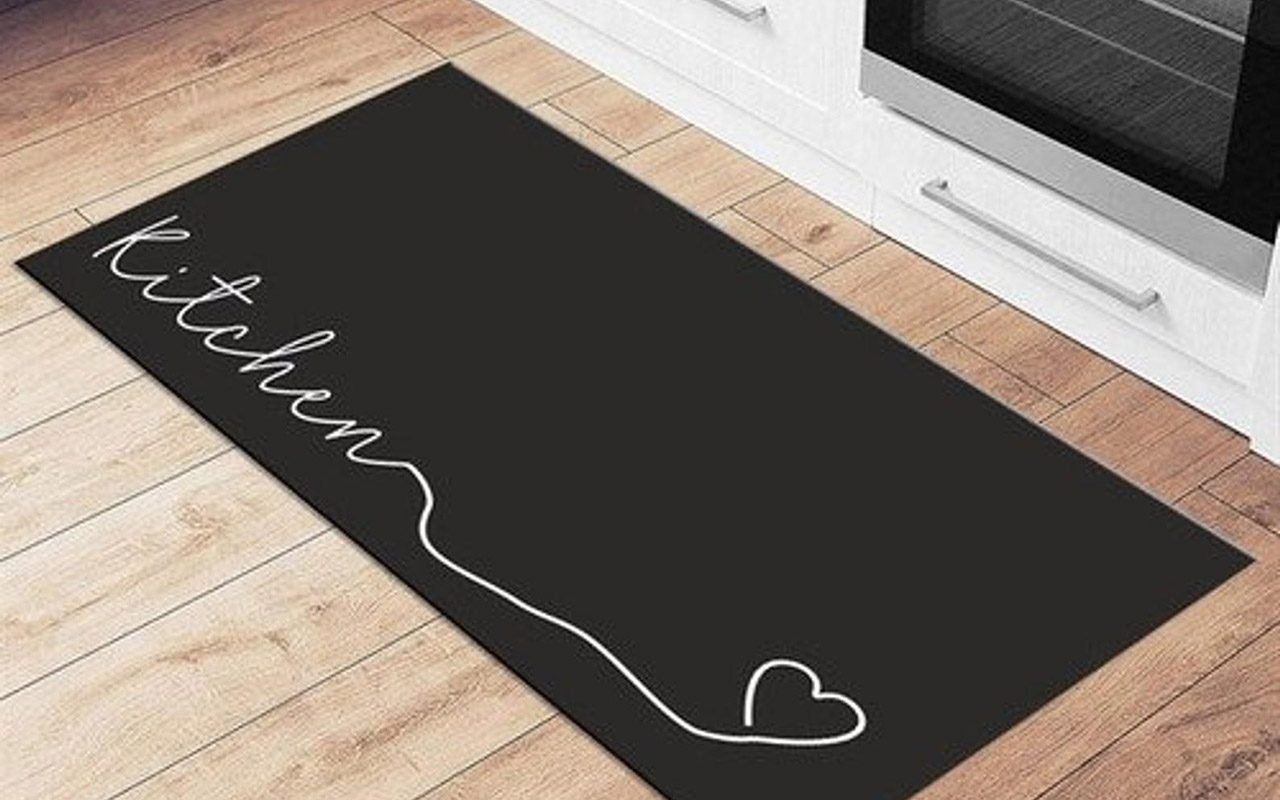
Source: www.tasteofhome.com
Quick Daily Clean
This fast routine keeps grease and crumbs from building up. It also lowers slip risk.
Steps:
- Shake it out outdoors. Tap the mat over grass or a bin to remove crumbs.
- Rinse with warm water. Use a sink sprayer or hose to lift loose dirt.
- Soap wash. Add a few drops of dish soap to a damp sponge. Scrub both sides. Focus on the textured side and edges.
- Rinse again until water runs clear. No suds should remain.
- Air-dry upright. Hang the mat so air moves on both sides. Make sure it is fully dry before placing it back.
Time-saving tip: Keep a small brush under the sink. A 60-second scrub each night prevents heavy weekend work.
Safety note: A wet mat can be slippery. Set it aside to dry before walking on it.
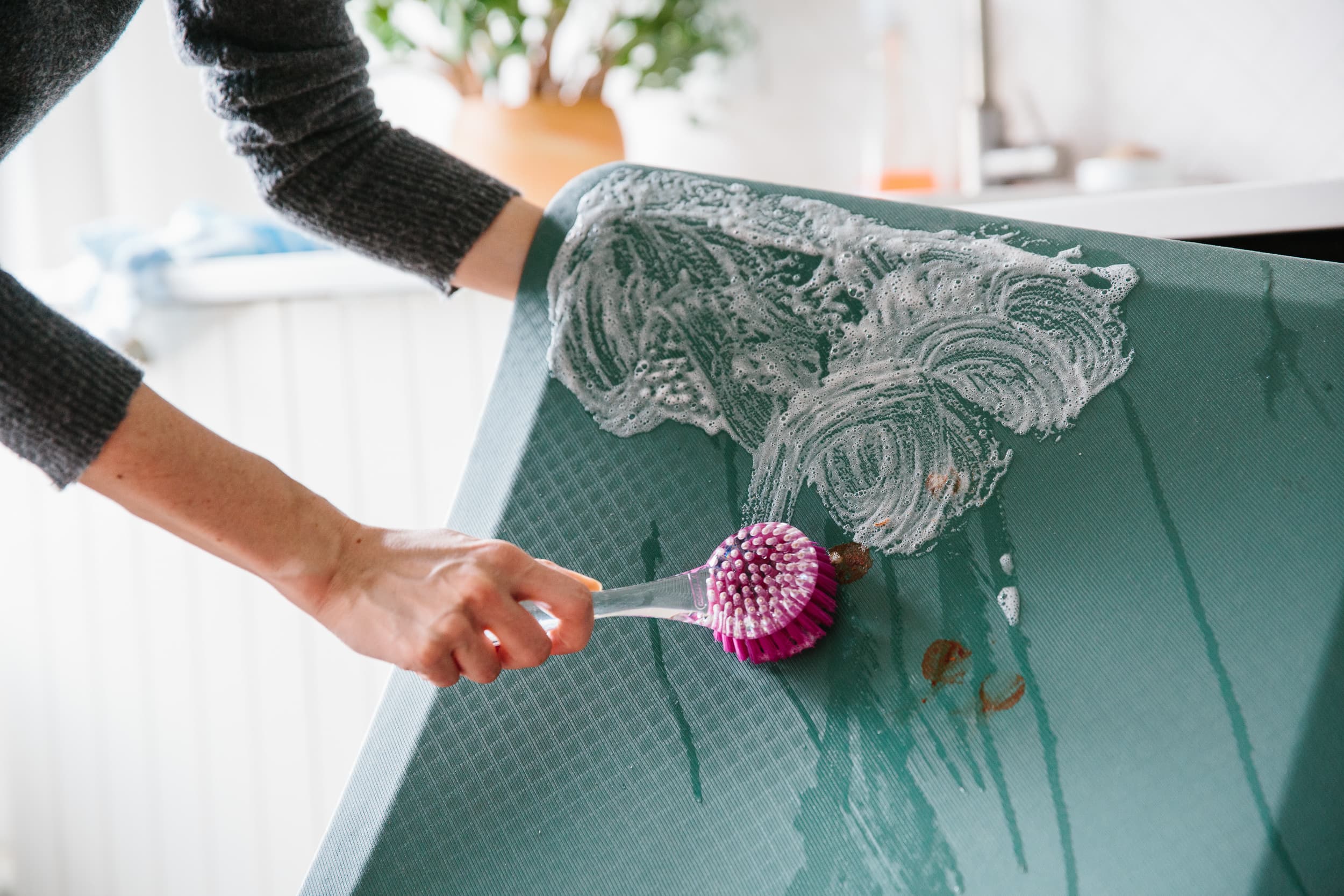
Source: www.thekitchn.com
Weekly Deep Clean
A deeper clean removes film, grease, and hidden grime that daily rinses miss.
Steps:
- Pre-rinse with warm water.
- Soak for 10 to 15 minutes. Use a bucket or tub with warm water and a few pumps of dish soap.
- Scrub the texture. Use a soft brush. Work in small circles. Pay attention to corners and the underside.
- For grease lines, apply a food-safe degreaser. Let it sit for 2 to 3 minutes, then scrub.
- Rinse very well. Any residue can attract dirt and feel slick.
- Disinfect if needed. Spray 3% hydrogen peroxide. Let sit 5 minutes. Rinse again.
- Dry fully. Hang or place on a rack until no moisture remains.
Pro insight: In a test kitchen I managed, this weekly routine cut slips and odors. Staff reported the floor felt “grippier” by mid-week.
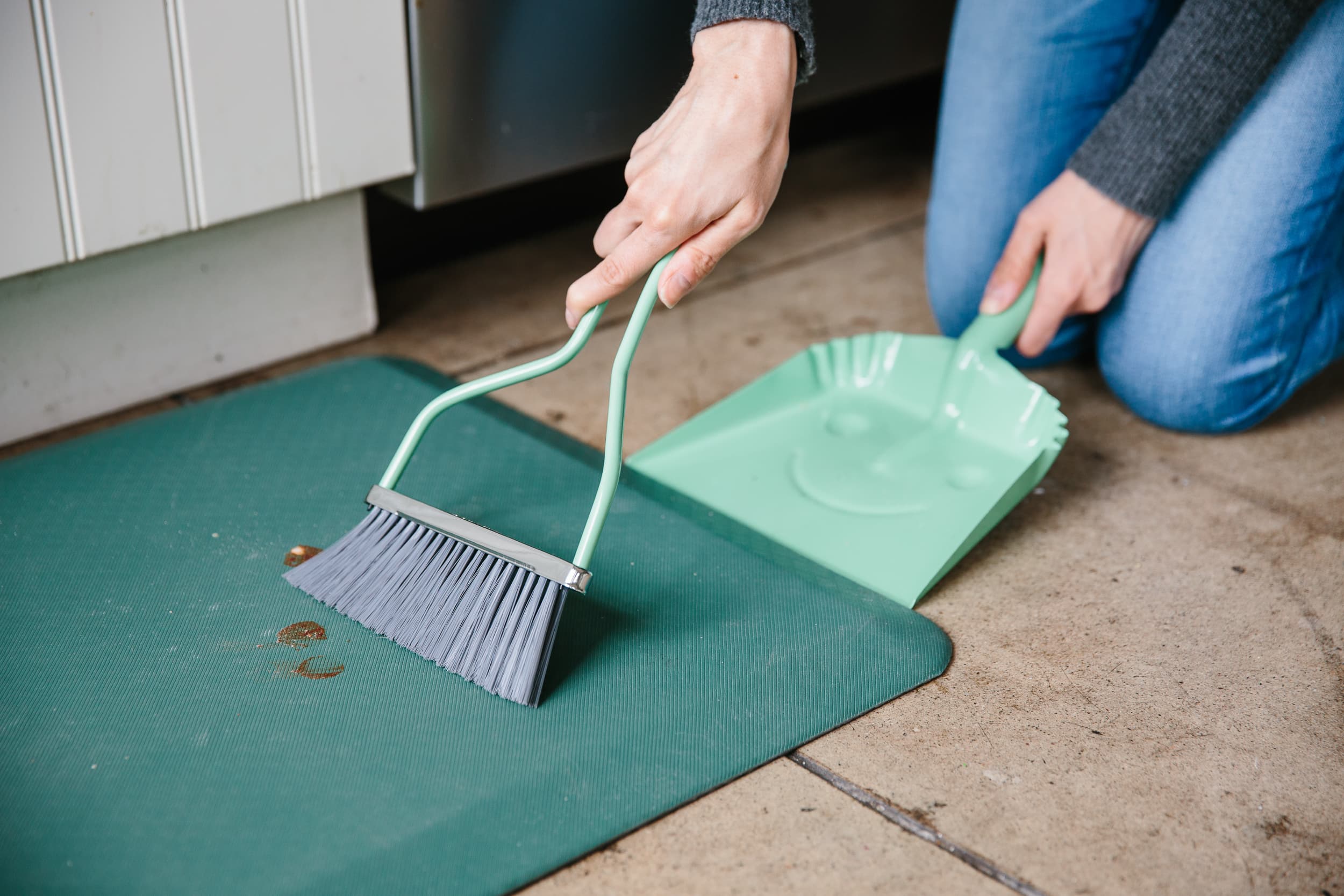
Source: www.thekitchn.com
Stain And Odor Removal
Kitchen mats trap spills. Act fast to stop stains and smells.
Food stains:
- Blot first. Do not rub. Rubbing can push the stain deeper.
- Make a paste of baking soda and water. Spread it on the spot for 10 minutes.
- Scrub gently. Rinse well.
Grease spots:
- Add a few drops of dish soap straight to the spot. Let it sit 5 minutes.
- Use warm water and a brush. Rinse until clear.
- Repeat if needed, then dry.
Odors:
- Spray a mix of 1 cup water and 1 cup white vinegar. Let sit 10 minutes. Rinse and dry.
- For strong odors, use an enzyme cleaner. Follow the label. Enzymes break down food soils that cause smells.
Pro tip: If the mat smells after drying, it likely needs a longer soak or an enzyme step.
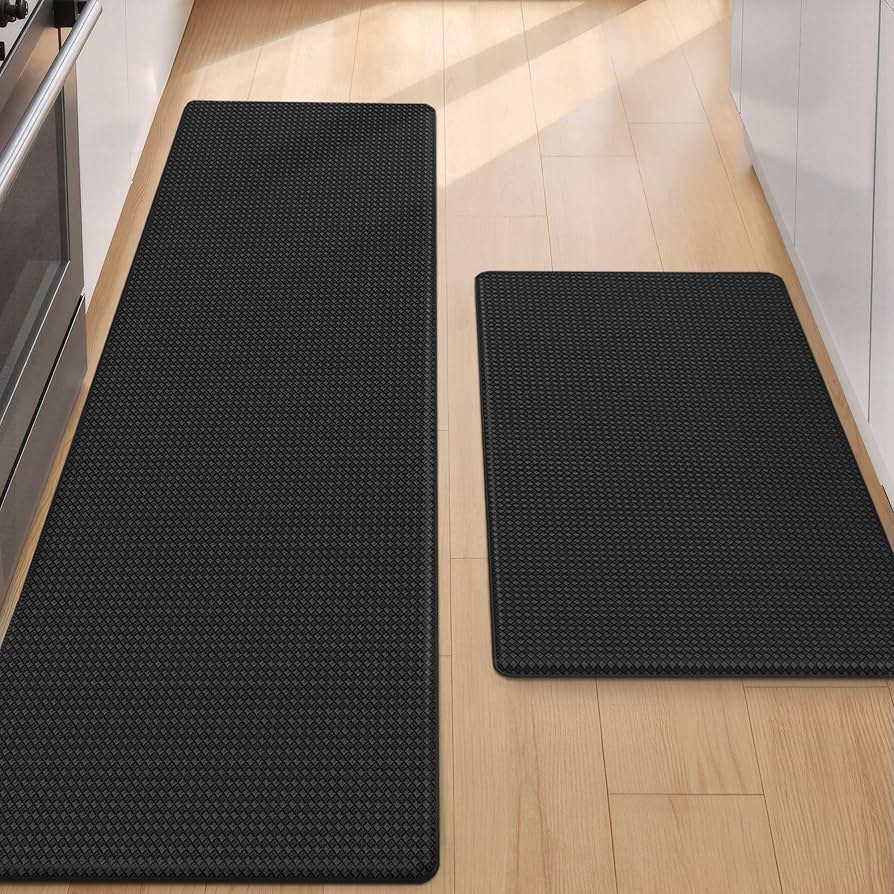
Source: www.amazon.com
Drying And Care Tips
Drying is not a throwaway step. Moisture under a mat can cause film, odor, and slip risk.
Best practices:
- Dry both sides. Hang the mat so air moves freely. Do not lay flat on a wet counter.
- Speed it up with a fan. Airflow matters more than heat.
- Avoid direct high heat. Do not put rubber mats in a hot dryer. Heat can warp or crack rubber.
- Return only when fully dry. Press a paper towel on the surface. If it stays dry, you are good.
Storage:
- Store flat or gently rolled. Sharp folds can cause cracks over time.
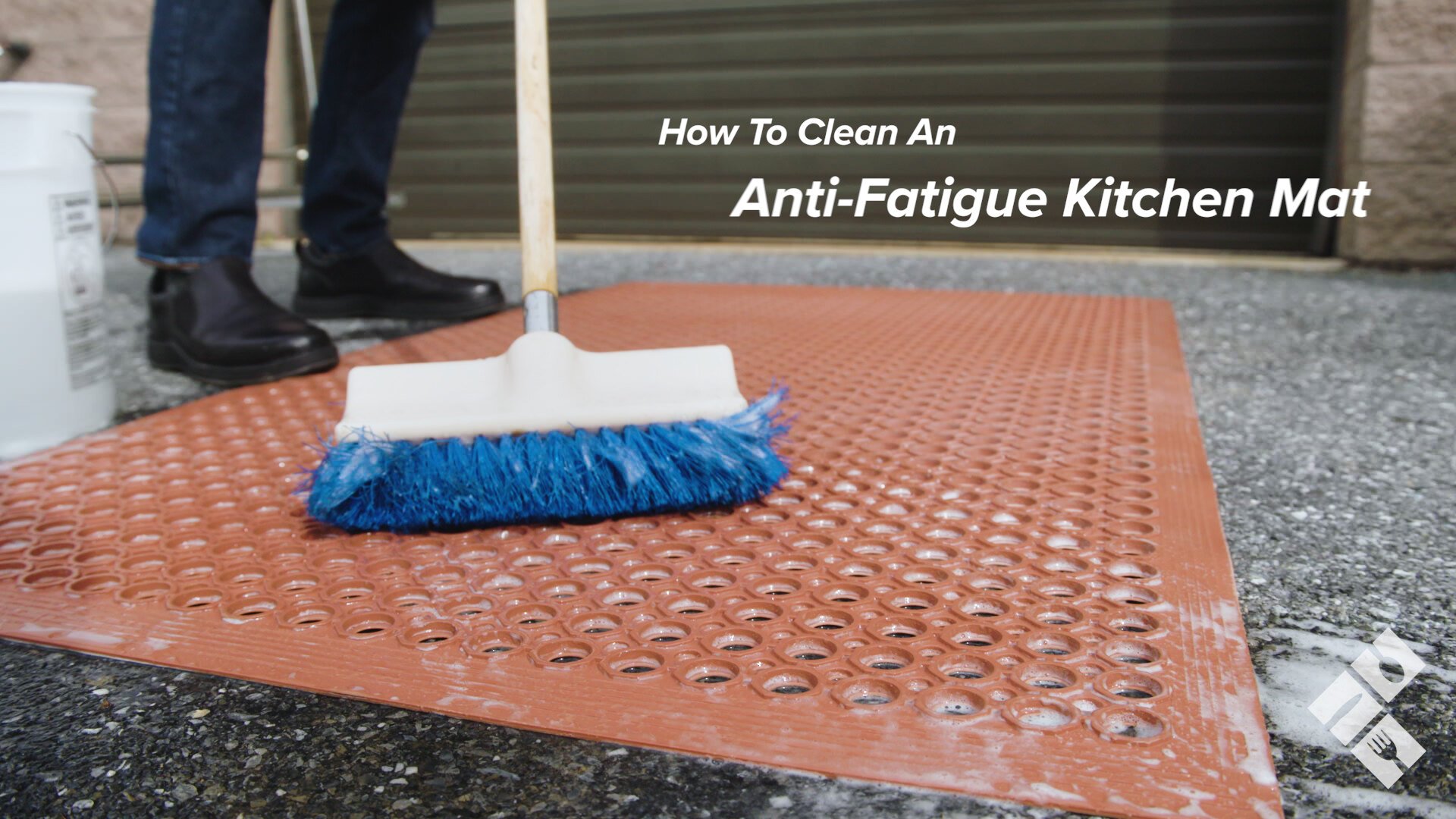
Source: www.webstaurantstore.com
Mistakes To Avoid And Safety Notes
These common errors shorten mat life and reduce traction.
Avoid:
- Strong bleach or solvent cleaners. They can dry out rubber and fade color.
- Steel wool or hard scrapers. These scratch the surface and trap dirt.
- Skipping rinses. Soap film attracts grime and feels slick.
- Putting a wet mat back on the floor. Trapped moisture can lead to odor and slipperiness.
- Pressure washers at close range. High pressure can gouge rubber and damage edges.
Expert note: Guidance from mat manufacturers and food safety bodies favors pH-neutral cleaners, full rinsing, and air-drying to protect non-slip texture.

Source: www.amazon.com
Eco-Friendly And Budget Options
You can keep it clean without fancy products.
Simple options:
- Dish soap and warm water for daily use
- Vinegar-water spray for odor control
- Baking soda paste for stains and light abrasion
- Reusable microfiber cloths to reduce waste
- Enzyme cleaner as a targeted, low-tox option
Water-wise tip:
- Use a basin for soaking instead of running water. It saves water and improves soak time.

Source: airtec.com
Troubleshooting Common Issues
Sticky or slick surface:
– Cause: Soap residue or grease film.
– Fix: Rinse longer. Use warm water and a small amount of degreaser. Rinse again and dry.
White haze or chalky look:
- Cause: Hard water deposits.
- Fix: Wipe with a 1:1 vinegar-water mix. Rinse and dry.
Persistent odor:
- Cause: Bacteria in grooves.
- Fix: Enzyme cleaner. Longer soak. Full dry with airflow.
Edges curling:
- Cause: Heat exposure or storage stress.
- Fix: Warm rinse, then place under a flat weight as it dries. If cracks form, consider replacing.
Loss of grip:
- Cause: Worn texture or residue.
- Fix: Deep clean. If still slick after drying, the mat may be at end of life.
Frequently Asked Questions
Q. How Often Should I Clean A Rubber Kitchen Mat?
Do a quick clean daily if you cook often. Deep clean weekly. If you fry or bake a lot, deep clean twice a week.
Q. Can I Use Bleach On A Rubber Mat?
Avoid strong bleach. It can dry out and crack rubber. If you must disinfect, use diluted hydrogen peroxide or a pH-neutral disinfectant.
Q. Is The Dishwasher Safe For Rubber Mats?
Most rubber mats are not dishwasher-safe. Heat and strong detergents can warp rubber. Hand wash for safety.
Q. How Do I Remove Oil Smells?
Soak in warm, soapy water. Then use an enzyme cleaner or a vinegar rinse. Rinse well and air-dry fully.
Q. Why Is My Mat Still Slippery After Cleaning?
Soap film or oil may remain. Rinse longer with warm water. Use a small amount of degreaser, rinse again, and dry fully before use.
Q. Can I Use A Pressure Washer?
Use caution. Keep the nozzle far from the surface. High pressure up close can damage the mat.
Wrap-Up And Next Steps
Clean mats last longer, smell better, and keep your kitchen safer. Use a daily quick clean, a weekly deep clean, and smart drying. Avoid harsh cleaners and heat. Treat stains early, and go for enzyme help when odors linger. Small steps now save time and money later.
Ready to start? Pick a 10-minute window today. Do the quick clean, then set a weekly reminder for a deeper wash. If you found this helpful, subscribe for more simple care guides or leave a question below.
